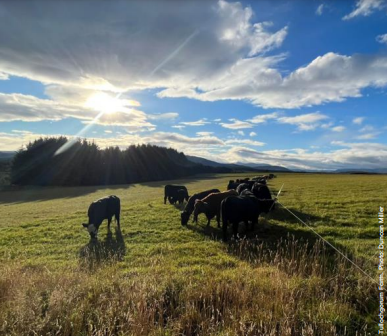Working with five farms across the national park, each farm would need to produce a grazing management plan, implement adaptive grazing management, optimise sward productivity through rotational grazing systems and maintain permanent habitats in good biodiversity condition.

The project aimed to utilise mob grazing methods to manage grasslands better, increase sward species diversity, and create biodiverse pastures.
Recommended Content
Connected Content
Regenerative farming looks to optimise the use of the ecological system and environment, in order to benefit from the natural ecosystem services that they provide.
Mob grazing is a form of intensive managed grazing where large numbers of animals graze a small area of land for a short period of time. There is increasing interest in this system due to perceived productivity and environmental benefits. However, there is very limited research to quantify the impact of mob grazing systems, and many farmers adopting the system have been influenced by anecdotal evidence from other farmers.
Agroecology is a holistic and integrated approach that simultaneously applies ecological and social concepts and principles to the design and management of sustainable agriculture and food systems. Definition from FAO.
The livestock industry is an integral part of the agricultural sector, encompassing various aspects of animal husbandry and production. It plays an important role in global food security and supports the livelihoods of millions of people worldwide.
Help us collate the knowledge sources, organisations and initiatives out there that are seeking to improve the farmed environment
Biodiversity encompasses all the variety of life on Earth from genes to species, populations, communities and ecosystems. In ecological and environmental sectors, we mostly refer to the biodiversity of plant and animal communities within particular habitats.


